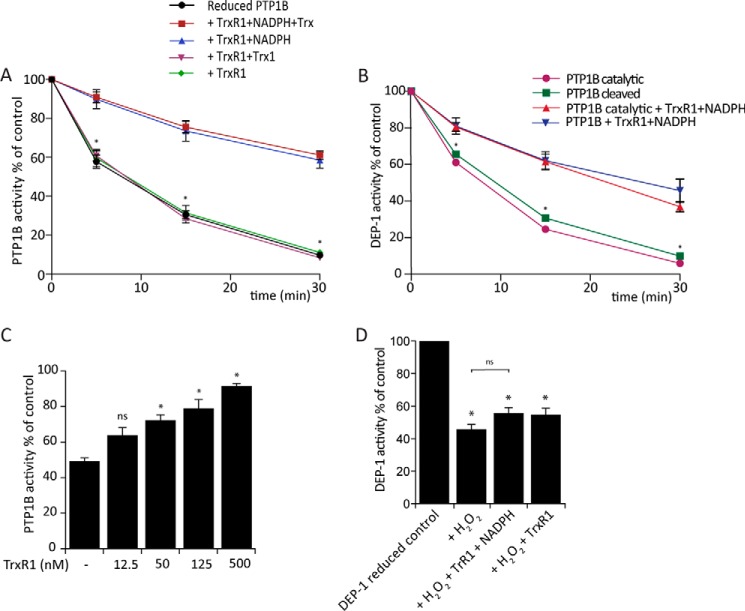Figure 5.
TrxR1 activity protects PTP1B inactivation during exposure to H2O2. A, protection of PTP1B from H2O2 requires only TrxR1 and NADPH. PTP1B was treated with H2O2 in the presence of various components of the Trx system and assayed for PTP activity as shown in Fig. 3B. Rates of inactivation with Trx1/TrxR1 or TrxR1 without NADPH were indistinguishable from that with PTP1B alone (Fig. 3B) (n = 3; mean ± S.E.; *, p < 0.05). B, reduced PTP1B cleaved and PTP1B catalytic domain variant (600 nm) were treated with the indicated concentrations of TrxR1 (0.5 μm) and 200 μm NADPH and exposed to 100 μm H2O2 for 5, 15, and 30 min (n = 3; mean ± S.E.; *, p < 0.05). C, concentration-dependent protection of PTP1B activity by TrxR1. Reduced PTP1B (600 nm) was treated with the indicated concentrations of TrxR1 and 200 μm NADPH and exposed to 100 μm H2O2 for 5 min (n = 3; mean ± S.E.; *, p < 0.05). D, reduced DEP-1 (80 nm) was treated with the indicated concentrations of TrxR1 (0.5 μm) and 200 μm NADPH, exposed to 150 μm H2O2 for 5 min, and then assayed for PTP activity as in panel A (n = 3; mean ± S.E.; *, p < 0.05).

